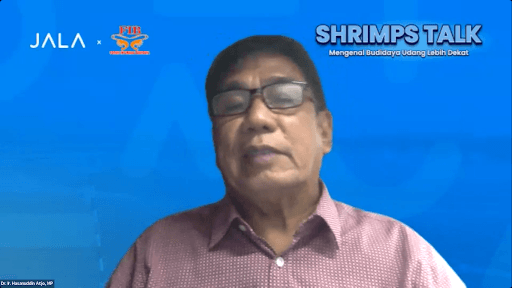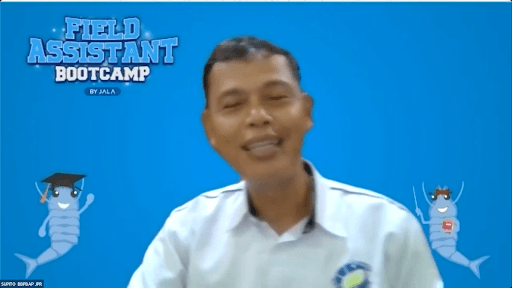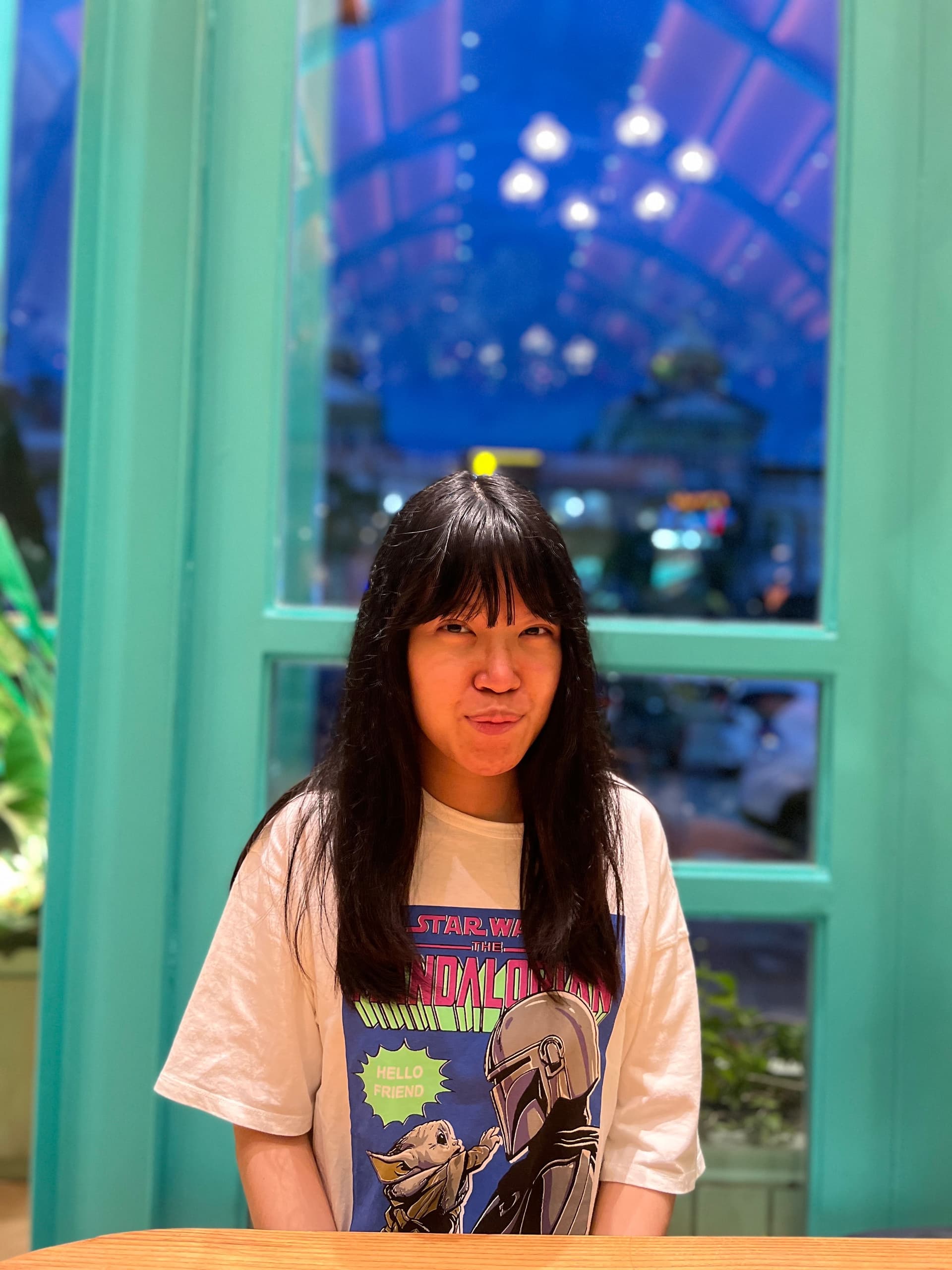
On March 20 2023, JALA held the sixth online webinar series in collaboration with Forum Informasi Budidaya, SHRIMPS TALK. This time around, SHRIMPS TALK discussed 2 insightful topics: Shrimp Disease and How to Handle Them with Dr. Ir. Hasanuddin Atjo, MP, Head of SCI Makassar, and Practical Management of Diseases in Shrimp Cultivation with Supito, S.Pi., M.Si., Head of BBPBAP 2020. This webinar had 273 attendees.
Shrimp Diseases and How to Handle Them
In the first session, Dr. Ir. Atjo explained that pathogens can enter cultivation systems by two means: vertical (through shrimp fry) and horizontal (through water, humans, equipment, and other means). Moreover, an uncontrolled environment, such as poor water quality and overfeeding, is a trigger for shrimp stress which results in diseases.
 Compared to competitor countries, Indonesia is behind in terms of increasing shrimp production and handling diseases. Dr. Ir. Antjo shared tips to minimize diseases in shrimp farms.
Compared to competitor countries, Indonesia is behind in terms of increasing shrimp production and handling diseases. Dr. Ir. Antjo shared tips to minimize diseases in shrimp farms.
The first is through genetic improvement, in which farmers use shrimp fry with superior genetic characteristics. In Indonesia, the most common type of shrimp fry is the balanced type, with moderate growth and high adaptability. Next, he also recommended the two-step cultivation method, which is common in Ecuador and Vietnam. In this method, shrimp fry is grown in indoor nurseries under a controlled environment, and then moved to grow-out ponds.
Water quality should also be maintained. Shading of 55% is recommended to prevent algal bloom, as well as monitoring parameters such as pH and temperature. Feeding programs should also be considered. Using auto feeders is recommended as they can increase efficiency and reduce uneaten feed that might accumulate at the bottom of the pond and disrupt the balance of organic matter levels. Farmers should also regularly siphon the bottom of the pond regularly and introduce probiotics and prebiotics to further prevent pathogenic growth.
Practical Management of Diseases in Shrimp Cultivation
Moving on to the second presentation, Supito explained that shrimp diseases can be categorized into 3: viral, bacterial, and non-infectious diseases (originating from toxicity of compounds in the pond such as ammonia). Although there are many diseases that threaten shrimp farms, he believes cultivations can still run successfully.
 Handling shrimp diseases is challenging because it is hard to administer drugs into shrimp. However, diseases are only a threat when shrimp health is compromised, and by then they can spread through the pond water. It is thus crucial to keep shrimp in a prime health state.
Handling shrimp diseases is challenging because it is hard to administer drugs into shrimp. However, diseases are only a threat when shrimp health is compromised, and by then they can spread through the pond water. It is thus crucial to keep shrimp in a prime health state.
Some practical methods to manage shrimp diseases include filtering pond water and using tanks. Prior to the start of cultivation, the soil and water should be well-prepared. Using biofilters with water plants can also help in reducing the build-up of organic matter in water.
Not only that, during the farm construction stage, farmers need to ensure that the farm does not leak easily and the water will remain clear during aeration. Water that is introduced in the pond should also be sterilized.
After the two presentations, audiences shared their questions regarding tips to manage diseases in their farm. JALA hopes that the presentations can help shrimp farmers to mitigate shrimp diseases.
If you are involved in the shrimp cultivation industry and want to improve your farm productivity with the latest information and insights, follow JALA’s Instagram at @jalaindonesia so you don’t miss the next SHRIMPS TALK and other upcoming events. See you in the next SHRIMPS TALK!





